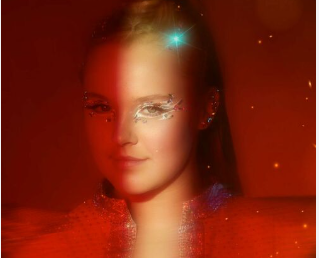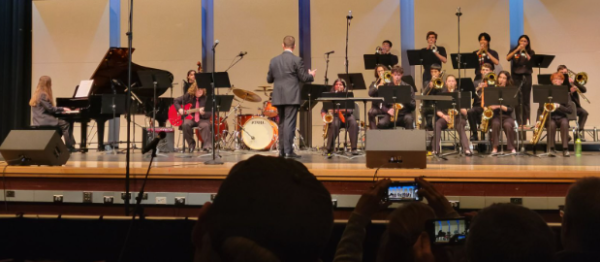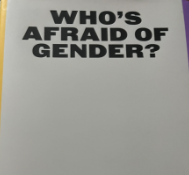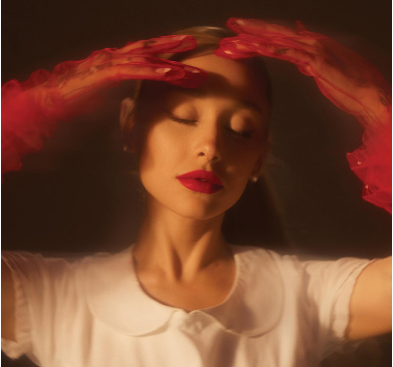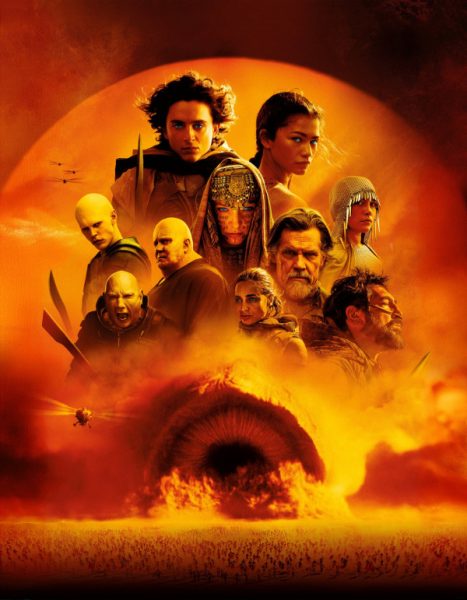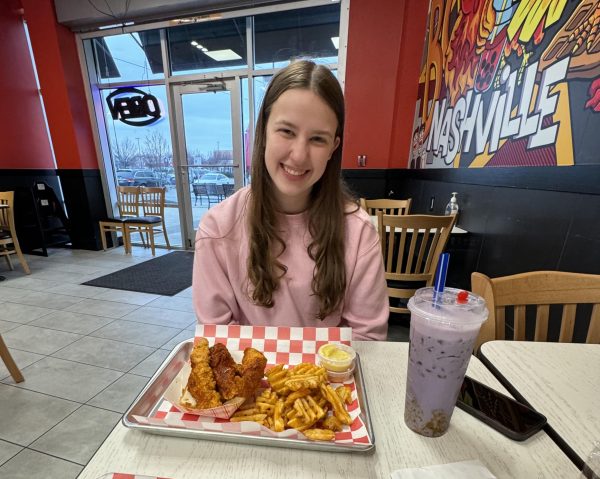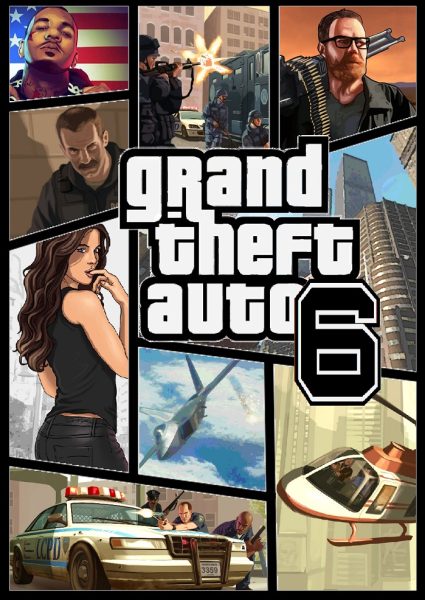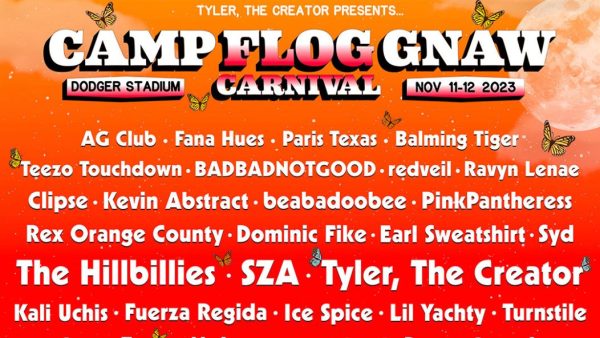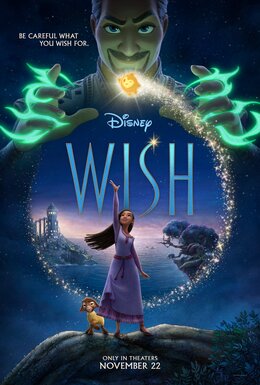What happens when you combine Disney and Final Fantasy? A Kingdom Hearts review
December 11, 2018
Have you ever wanted to be severely confused about a plot while simultaneously cursing Donald Duck under your breath? That is essentially the Kingdom Hearts experience.
The original and first Kingdom Hearts is a Playstation 2 game released on March 22, 2002. Though it may seem like an odd combination, the game is a crossover between Disney and Final Fantasy and is directed by Square Enix’s Tetsuya Nomura.
What started as an unlikely combination and an elevator ride turned into a great success. In fact, the seventh, highly anticipated game, Kingdom Hearts 3, is being released on January 29, 2019, 16 years after the first game.
For those interested in that game, I recommend playing Kingdom Hearts first.
This crazy crossover game known as Kingdom Hearts starts with an animated cutscene. Players see a boy drifting through what may be a dark, cloudy sky. He’s been experiencing weird thoughts, he explains as text slowly appears and disappears from the screen.
After the boy says he does not know whether this, whatever this may be, is real or not, an amazing, trippy animated sequence commences and the catchy “Simple and Clean” remix by Utada Hikaru plays in the background.
There is no better way to describe this than with, “What is going on? I love it.”
After this sequence, I can assure that whenever the word “When,” is heard, the player will make sure to follow it up with “You walk away…” The song is just that catchy.
After the musical opening, the actual story and game is introduced. The boy is Sora, the main character that the player becomes. Sora’s accompanying friends, which were also shown in the opening, are Riku, a boy with long silver hair, and Kairi, a girl with short brown hair.
These three friends live on Destiny Islands, the game’s first world. During the time the player spends in this world, cutscenes show that Sora and Riku, while being close friends, are also rivals. They compete through wooden sword fights and races, as well as trying to get affection from Kairi.
These characters have contrasting personalities. Sora is laid-back and sometimes immature, which is seen when Riku teases him. It may not be apparent now, but Sora becomes more mature and likable as the game progresses.
Riku, on the other hand, is mysterious and sometimes cold. Despite this, he is caring towards his friends.
Friendship is a major theme in this game. This will be quite obvious later. The characters’ main objective is to protect their friends throughout the game.
As the player moves around Destiny Islands, the player becomes more familiar with the controls. Sora can jump, run, use an item, and attack with a wooden sword. The controls are average. Attacking feels satisfying, but the movement can feel awkward at times.
The jumping somehow feels floaty as Sora moves midair while he jumps, yet stiff when the landing. This makes it hard to predict where Sora will land, ultimately making platforming one of the worst aspects of the first game.
Also, there is a command box in the bottom left corner of the screen. More options will be visible in this box after the first world. By using the right analog stick or the directional pad, the player can go to different commands. In the first world, this is not needed. Once the player progresses through the game, this will become helpful, especially after players obtain magic abilities and healing items. This system is easy to access and during times where the player is in an important fight, the command box will be extremely useful.
As the various tasks on Destiny Islands are completed, the story progresses through cutscenes. In one scene, Sora, Kairi, and Riku are hanging out together and they are all discussing their curiosity about the various worlds that may be out in the universe. Destiny Islands is the only place they’ve ever known, after all. Riku sounds the most curious and rather agitated that they are stuck on this island. He then suggests they build a raft to go explore these various worlds.
This comes off an a little awkward, as one would assume Destiny Islands is on a planet, but it seems Destiny Islands is a world of its own. This is the same for the rest of the worlds in this game.
After the scene, we cut to Donald Duck and Goofy, who work for King Mickey. Apparently, King Mickey is missing because he went to look for an important key and the duck and dog must go find him. This sounds like a major plot point to me!
This scene ends and the player is given more tasks on Destiny Islands. At one point, Sora goes into a cave where him and Kairi would play when they were younger. Suddenly, a cloaked man is in the cave speaking to Sora, mysteriously mumbling about a “door” and other worlds. He warns Sora that he will not be prepared for the upcoming events.
After playing this series for the second time, I’ve realized that a lot of characters speak cryptically and when they do it, it sounds like the things being spoken are being said for the sake of being said. It’s like when somebody uses the word “Soul” instead of heart, as if it makes their sentence any more meaningful. Instead of the word “Soul,” the game abuses the words “Light” and “Dark,” as if we are supposed to know what those words represent.
At the end of the day on Destiny Islands, Sora is laying bed when a storm commences. Out of concern for his, Riku and Kairi’s escape raft, Sora runs down to the beach.
Honestly, I think this is the funniest moment in the series. In this scene, we hear Sora’s mom’s voice calling him down for dinner, and that’s it. Like any normal mom, maybe she would go look for him, but that is not the case. We never see her for the rest of the series, and Sora never mentions his mother.
Once Sora gets outside, a bunch of shadow creatures pop from the ground and attack Sora. It is revealed later that these are called Heartless and they are the game’s basic stock enemy. They are easy to defeat at first, but there are many variants, and especially towards the end of the game, they can get very difficult to defeat.
Slashing them up is satisfying and can reward small amount of experience points.
After hacking and slashing through the Heartless, Sora finds Riku. Riku keeps exclaiming that the door is open. As the sky goes black and a literal dark hole-looking object in the sky floats around, Riku somehow knows what’s going on.
Sora is just as confused as the player. “What door do you people keep talking about?” I continued to question this.
This is something I like about Sora. For the most part, we learn things at his pace and see things through his eyes, which makes Sora an easier character to feel connected to.
Riku gets sucked into a pit of darkness and Sora tries to save him. However, it’s too late and Riku is gone.
The screen goes black and a light then shines on the screen. A large key weapon lies in Sora’s hands. This is called the Keyblade, Sora’s weapon for the rest of the game, and Sora is the chosen one.
Now, Sora has to defeat a large heartless monster. After doing so, he is sucked into the black hole that was mentioned before and is thrown on a new world. This world is Traverse Town and it acts as the main hub world for the majority of the Kingdom Hearts series.
Here, Donald Duck and Goofy, who are also in town, come across Sora. They realize Sora has the key that Mickey was searching for. After realizing they have a common goal of wanting to find their friends, they team up.
For the rest of the game, the trio travels to different worlds to bring justice to each world and protect the world from the Heartless, defeat different Disney villains, seal the keyholes of the different worlds using the Keyblade, and try to find out more about the overlying villain, the Heartless, and the Keyblade.
One may think that the idea of a Final Fantasy and Disney crossover may sound and look really weird. After all, the Japanese and Western art styles look like they may contrast too much. This is not the case for Kingdom Hearts, though. Somehow, these different stylistic choices work very well and blend together. The fact that the game uses 2D models probably helps, as well.
The worlds in the game are mostly settings from Disney movies. These are done really well and they truly capture the essence of the movies in which they originated from. Even when the game has to improvise and make parts of the worlds that were not shown in the movies, it still fits perfectly in the world and nothing sticks out.
Visually, the game looks like most games released in 2002, so I will not hold that against it.
Another thing I enjoy about this game are the characters and the interactions between them. Surprisingly, we don’t see Sora and Kairi or Riku and Kairi interact all too much, but Riku and Sora do. Their contrasting personalities work really well. The player gets to see the flaws and strengths of each character when they interact and this makes them feel more natural.
When they talk, it is recognizable they are caring friends, which also makes the rivaling parts of them even more tense.
The interactions between Sora, Donald, and Goofy work, too. As the game moves along, their bond grows closer. Sometimes, Donald and Sora have disagreements and this adds to the genuinity of their friendship.
The combat, characters, and worlds are easily the strongest part of this game. These are the parts that really kept me interested in the series and thus compelling me to play the other games.
As much as I love Kingdom Hearts, the first game has a lot of flaws.
The first major complaint I have are the boss battles. They are either incredibly hard or sort of difficult, long, and tedious.
For instance, the first boss battle I had trouble with was the boss in Deep Jungle, where Sora fights Clayton (from Tarzan), who is riding upon an invisible chameleon Heartless.
The first part of the battle involves hitting Clayton, who has a shotgun, with the Keyblade when he is not on the lizard. This part is easy. However, after he gets on the lizard, the misery starts.
First of all, the camera pans so that it faces Sora and not the enemy standing literally in front of him. This makes it tough because the boss will start attacking before the player gets a chance to move the camera. I have no idea why the fight starts this way, but it is incredibly obnoxious. How is the player supposed to start attacking if they cannot see the enemy in time?
Let’s keep in mind that this is a boss early on in the game.
The rest of the bosses are easy, besides Dark Sora on Captain Hook’s ship in Neverland, but they drag on for what seems like forever.
Maleficent’s dragon is an example of this. As long as the player keeps healing, using an attack-absorber spell, and hitting the dragon, they should should be fine. Maleficent’s dragon has a large sum of heal, so the fight is very repetitive.
Another annoying aspect is the AI that help Sora in fights, which are usually Donald and Goofy. Goofy is alright and helpful. Donald, however, is the least helpful character ever. His specialty is using magic, like healing spells. This would be nice if he actually used it!
If I was seconds away from dying, Donald would not even bat an eye, even if his health level was higher than my own.
With all this being said, I still recommend playing the game, as long as the flaws can be looked past. Disney fans, hack-and-slash fans, and those looking to get into a complex story should definitely play this game.
The following games are definitely superior to the first game. It is worth playing Kingdom Hearts to get to its sequels.
The Kingdom Hearts: The Story So Far disc for the Playstation 4 has every single Kingdom Hearts game needed in order to catch up with the story.



